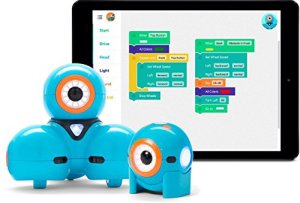Coding is the backbone of all computer programming, software, mobile apps and websites. It serves as the language that translates commands into technology taking action – whether it’s printing a document from a computer or making a character fly in a game on a tablet. In Arkansas, according to code.org, there 1,885 open computing jobs (growing at 3.0x the state average), 326 computer science graduates, 19 schools teaching computer science. Arkansas is one of 25 states where students can’t count computer science for credit towards high school graduation. Code is not yet being taught regularly in our school systems, but there are plenty of resources for learning on our own. Coding (or computer programming) is a new type of literacy. Just as writing helps you organize your thinking and express your ideas, the same is true for coding. In the past, coding was seen as too difficult for most people.
Most experts agree that coding can be introduced as early as the preschool years. Coding is similar to reading, writing and arithmetic in terms of its symbolic and communication qualities. In this regard, it’s appropriate to begin introducing coding concepts at the same time these other preschool concepts are learned.
- Code.org: This is an organization focused on getting computer science education in schools. This is the organization that pushed the “Hour of Code” campaign with support from Mark Zuckerberg of Facebook, Bill Gates of Microsoft, Amazon and Apple – to name just a few – and offers free courses for students, as well as education for teachers. It is a great place to start.
- Hopscotch: This a downloadable app for iPads that guides kids through making games, animation and art. This is a drag-and-drop program; no actual writing of code. Hopscotch can be used to learn fundamental programming concepts – sequencing, abstraction, values, conditionals.
- Tynker: This is computing platform that helps children develop computational thinking and programming skills in a fun, intuitive and imaginative way. The visual programming language, interactive self-paced courses, and game-based programming activities provide an easy introduction to programming, and empower children to innovate and create. Tynker is available on the Web and on iPad and Android-based tablets, so that kids can make fun and useful applications for their favorite devices. The courses cost $50 each and while they are self-paced, if kids spent just an hour a week, most courses last approximately 16 weeks.
- Scratch and ScratchJr.: Scratch is for ages 8 – 16, whereas ScratchJr is an introductory programming language that enables young children (ages 5-7) to create their own interactive stories and games. With Scratch, kids can program their own interactive stories, games, and animations — and share their creations with others in the online community. In ScratchJr., children snap together graphical programming blocks to make characters move, jump, dance, and sing. Children can modify characters in the paint editor, add their own voices and sounds, even insert photos of themselves – then use the programming blocks to make their characters come to life. Both are free; Scratch is a web-based program, and ScratchJr. available as a free app for both iPad and Android tablets.
- Bitsbox: This is a monthly box subscription that comes with instructions for games and apps to build. They liken it to the computer magazines of the 80s. Kids can use Bitsbox as soon as they learn to read and write. With Bitsbox, kids learn to program by copying apps off project sheets and trading cards. With Bitsbox, children learn to program by creating fun apps that work on computers and gadgets like iPads and Android tablets. The Bitsbox.com website provides each child with a virtual tablet and a place to type their code. The experience starts with lots of guidance, first showing learners exactly what to type, then quickly encouraging them to modify and expand their apps by typing in new commands.
- For local camps and classes, look at the Arkansas Innovation Hub, located in the Argenta district of North Little Rock. They are offering camps and classes most of the summer.
- For going beyond the screen, look at the Make Wonder robots Dash and Dot. Designed for kids “5 to infinity,” the Make Wonder company provides activities by age as kids learn more and more about the robots and making them do what they want them to do. There are several apps made for an iPad that step kids up as they learn. Program them to squeal when you pick them up, navigate around sharp corners, or be on the lookout for approaching siblings or pets. Little learners can play with apps that weave in music and movement. Dash & Dot can go on adventures or perform for friends and family. Blockly, a visual programming language created by Google, introduces more advanced play. Drag and drop blocks of code to direct Dash & Dot around the house. More experience kids can build applications for Dash & Dot on iOS and Android with Objective C and Java using the open API.


